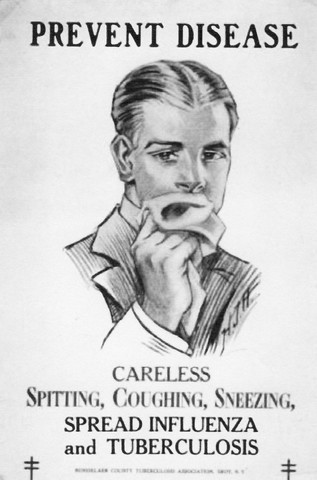Mexican Swine Influenza: The "Flu" or a "Flu-like" Illness? Questions Researcher Lawrence Broxmeyer MD
May 04, 2009 (PRLEAP.COM) Health News
Lawrence Broxmeyer MD would like to see more emphasis in diagnostic efforts towards seeking out an acute flu-like infectious disease and a little less rote regurgitation of present H1N1 influenza knowledge, which not only hasn't shown up in every case of the Mexican Swine Flu, but for all we know could be just another passenger virus. And he has a specific infection in mind, one which the World Health Organization proclaimed a global emergency in 1993 - tuberculosis - swine, avian and human, this time around merged into one.The CDC has a short memory. There was much the same "Influenza" talk when in 1990, a new multi-drug-resistant (MDR) tuberculosis outbreak took place in a large Miami municipal hospital. Soon thereafter, similar outbreaks in three New York City hospitals left many sufferers dying within weeks. By 1992, approximately two years later, drug-resistant tuberculosis had spread to seventeen US states, with mini-epidemics in Florida, Michigan, New York, California, Texas, Massachusetts, and Pennsylvania and was reported, by the international media, as out of control. Viral forms of swine, avian and human TB can be transmitted from one species to another.
A Press Release issued on August 19, 2008 by the National Institute of Allergy and Infectious Diseases (NIAID), contains a striking finding and conclusion: The 20 to 40 million deaths worldwide from the great 1918 Influenza ("Flu") Pandemic were NOT due to a virus, but to pneumonia caused by massive bacterial infection.
A study published in JAMA by Talbot and Moore in 2000 showed that Mexican immigrants to the US have the highest case rates for tuberculosis among foreign born persons.
The research of Lawrence Broxmeyer MD, a previous lead author of a study in The Journal of Infectious Diseases, first proclaimed that the 1918 pandemic was due to bacteria, particularly mutant forms of fowl, bovine and human tuberculosis (TB) bacteria. These forms of tuberculosis are often viral-like, mutate frequently and can "skip" from one species to another. Moreover such viral TB forms generate antibodies which react in the compliment fixation and later "viral" assays. They also grow on cultures which are supposed to grow only viruses.
In 2006, in a Medline paper published in Elsevier's Medical Hypothesis, Lawrence Broxmeyer, MD wrote:
"Influenza is Italian for "influence", Latin: influentia. It used to be thought that the disease was caused by a bad influence from the heavens. Influenza was called a virus long, long before it was proven to be one." Elsevier is a major medical publisher which also publishes The Lancet.
In 2005, an article in the New England Journal of Medicine estimated that a recurrence of the 1918 influenza epidemic could kill between 180 million and 360 million people worldwide. Similar to the present Swine Flu pandemic, a large part of the recent bird-flu hysteria was fostered by a distrust among the lay and scientific community regarding the actual state of our knowledge regarding the bird flu or H5N1 and the killer "Influenza" Pandemic of 1918 that it was compared to. And such distrust was and is not completely unfounded. Traditionally, "flu" does not kill. Experts, including Peter Palese of the Mount Sinai School of Medicine in Manhattan, remind us that even in 1992, millions in China already had antibodies to the Bird Flu H5N1, meaning that they had contracted it and that their immune system had little trouble fending it off.
In 2000 Dr. Andrew Noymer and Michel Garenne, UC Berkeley demographers, reported convincing statistics showing that undetected tuberculosis may have been the real killer in the 1918 flu epidemic. Although scientists have recently spun that a "new" strain of Mexican flu can strike healthy young people, flu traditionally attacks the old and the infirm. The 1918 killer, on the other hand went after men and women in their prime, between 20-40, targeted ages for a TB onslaught. Flu didn't traditionally show a male preference. TB did. With TB routinely, there was extremely low mortality between the ages of 5 and 15, also reflected in 1918. Besides, Noymer pointed out, Influenza typically came in the winter, this one began in the late spring and summer.
The first autopsy of a 1918 pandemic victim occurred in Chicago in April, the very same month that the Mexican swine "flu" came to our attention The seasoned pathologist doing it was besides himself seeing the lungs full of hemorrhages, not uncommon for mycobacterial infection such as TB, and troubled enough to mention to the Editor-in Chief of The Journal of Infectious Diseases ''to look over it as a new disease'', and not mere Influenza. The 1918 pandemic in fact, first got national attention, again in April through the April 1918 issue of what today is called The Morbidity and Mortality Weekly Report. If it was influenza, which at that time wasn't considered lethal enough to be a reportable disease, it wasn't acting like any influenza American medicine had seen. This mystery disease would subside, but it would come back in the fall of 1918…. with a vengeance.
Yet, Gorgas, Head of the US Army Medical Corp. insisted on referencing it as ''influenza'', an old and heretofore not that deadly disease.
Furthermore, argued Noymer, flu traditionally gave mild to moderate fever, but in the 1918 pandemic, patients could spike to 105 or 106 degrees, not uncharacteristic for an acute attack of tuberculosis. And so, Noymer and Garenne, aware of recent attempts to isolate the "Influenza virus" on human cadavers and their specimens, nevertheless concluded that: "Frustratingly, these findings have not answered the question why the 1918 virus was so virulent, nor do they offer an explanation for the unusual age profile of deaths".
"By 1918", Lawrence Broxmeyer, MD continued, "it could be said, in so far as tuberculosis was concerned, that the world was a supersaturated sponge ready to ignite and that among its most vulnerable parts was the very Midwest where the 1918 unknown pandemic began." A critical mass, much like the Mexican episode, had been reached. It is theorized that the lethal pig epidemic that began in 1918 Kansas just prior to the first human outbreak was a disease of avian and human tuberculosis genetically combined through mycobacteriophage interchange, with the pig susceptible to both, and as its involuntary living culture medium." This conforms to present thoughts about the Mexican epidemic.
In commenting on the NIAID report, Lawrence Broxmeyer MD writes that euphemisms like "pneumonia", "bronchitis" , "chest ailment", "the flu" etc. have been with us since time immemorial to describe tubercular involvement. This was noted in 1944 in pathologist Arnold Rich's classic test, "The Pathogenesis of Tuberculosis." It is also well known that bacterial secondary infection in TB cases is common.
Pioneer TB physician Sir John Crofton (1912-69 ) was convinced that a bacteria (not a virus) named Haemophillus Influenza was at the root of the great the Pandemic of 1918. He claimed it was bacteria (not viruses), which started the epidemic of 1918 and challenged Laidlow, an early "flu" proponent, directly to come to his laboratory for proof.
Haemophillus Influenza, itself a small bacillus, was discovered by Richard Pfeiffer in Koch's laboratory (the doctor who discovered the mycobacterial cause of TB).
Broxmeyer was never able to prove a direct link between between H. influenza and the mycobacteria that cause TB, but he continues to believe, similar to Noymer, that TB was behind the many deaths in the pandemic, specifically because it is well known that secondary bacterial infections, be they from Haemophillus influenza or any other common bacteria, are a common secondary manifestation in TB-infected lungs. Besides during the pandemic, one-third of patients who had Haemophillus influenza where also found to have tuberculosis. And, as always many other cases with TB went undiagnosed.
Whatever the "connection" between TB bacteria , and influenza bacteria, and a virus-caused "flu" epidemic, the August, 2008 report by the NIAID is a reminder that epidemics and pandemics are complex disease processes, which should not simply be assumed to due merely to a "virus" of great ferocity. "That was the mistake", Broxmeyer reiterates, "which once caused millions of lives".
Reference: Broxmeyer L. Bird flu, influenza and 1918: The case for mutant Avian tuberculosis. Med Hypotheses. 2006;67(5):1006-15. Epub 2006 Jun 27.
This and other papers regarding Lawrence Broxmeyer MD's ongoing research can be viewed by going to http://drbroxmeyer.netfirms.com
For those interested in persuing further the tuberculosis/influenza relationship please hear Dr.Ron Paul, MD's take on this at:
http://informationclearinghouse.info/article22507.htm


